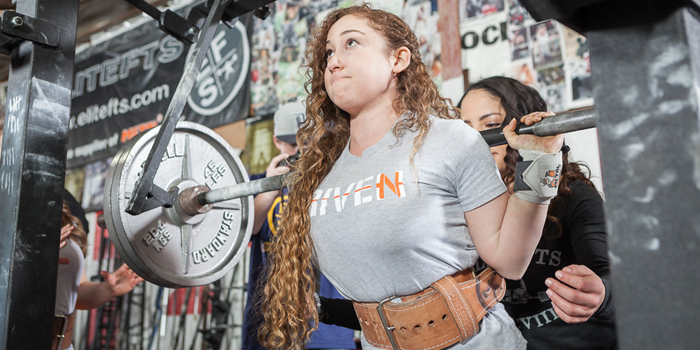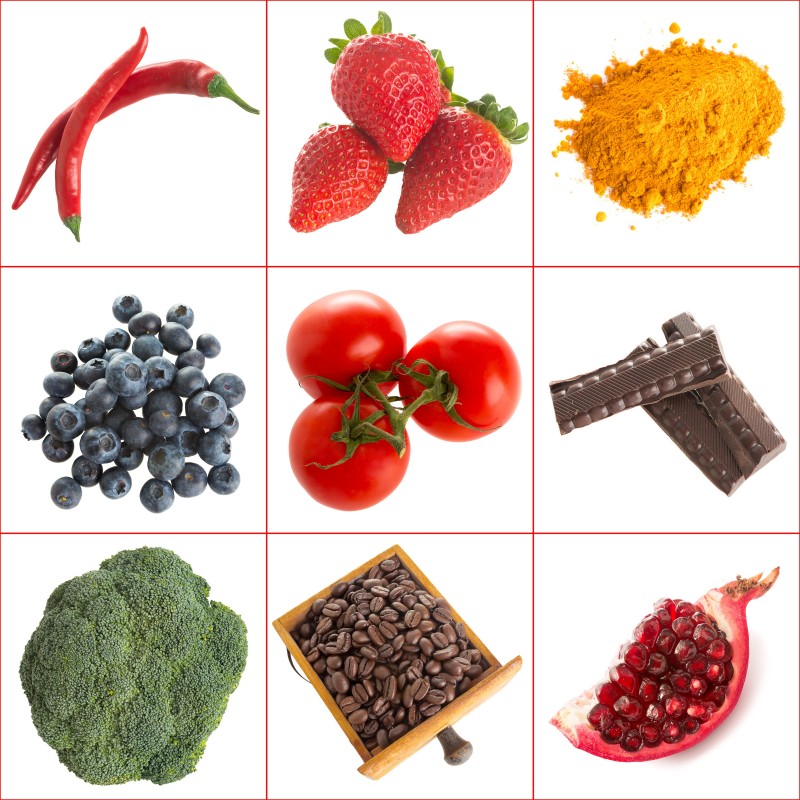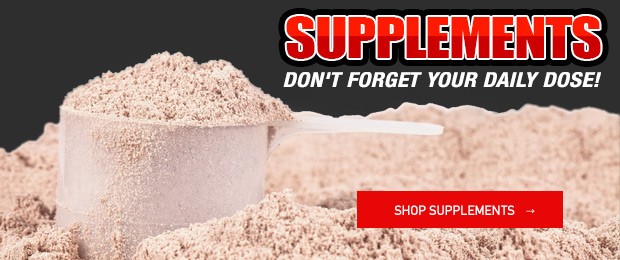
When it comes to training, most people (especially those reading elitefts) want to find ways to recover faster so that they can maximize their gains. When you exercise, muscle-damaging free radicals are made. For a long time people thought these molecules were hindering your recovery speed, and for this reason, they began to look for ways to neutralize those muscle-damaging muscle radicals.
Enter antioxidants (vitamin A, C, E, selenium, etc.). The entire idea behind antioxidant supplementation is that antioxidants reduce free radical damage and subsequent muscle soreness. Thus, by taking antioxidants following training, people believed that you could recover faster and train harder. But what if those pesky free radicals, which are made by the muscle in response to training, are necessary for hypertrophic training adaptations?
RECENT: Why Is Everyone Suddenly Taking Collagen?
If you have ever read about the general adaptation syndrome, I’m sure you can understand how some people began to think those radicals might be an important type of training stress required for muscle adaptations, and that supplementing with antioxidants might be detrimental. But this idea used to be taboo, so various researchers set out to answer these questions with scientific evidence.
What is RONS?
When you exercise (lifting, running, whatever), your energy demands go up and mitochondria (the powerhouses of the cell) start cranking out more energy in the form of ATP. In the mitochondria, the price you pay for making ATP can come in the form of free radical production. These oxygen-centered and nitrogen-centered radicals are known as reactive oxygen and nitrogen species (ROS, RNS, RONS), and are produced predominately in the mitochondria, but also to a lesser extent in other compartments of the muscle cell and by infiltrating immune cells during the muscle repair process. Thus, as you increase oxidative metabolism during exercise, you increase RONS production1. However, exercise isn’t the only stimulator of RONS, as cell death and DNA damage can also stimulate this the formation of these molecules.
While it sounds like RONS might be a negative thing (which many people used to assume), it's not that cut and dry. We know this because physiological levels of RONS are required for normal muscle force production. It’s only when RONS becomes excessive that muscle contractions become dysfunctional and that muscle weakens and fatigues1, 2. This notion highlights how RONS isn’t necessarily a bad thing, as the presence of these molecules activates the inflammatory and repair processes, as well as the endogenous antioxidant response pathway (production of your body’s endogenous antioxidants). Thus, the low levels of RONS generated during muscle contraction are considered both normal and healthy.
But does this mean RONS is necessary for muscle growth, or that providing exogenous antioxidants (which get rid of RONS) is sufficient to blunt hypertrophic gains? For a while, we didn’t have the answer to those questions, but nowadays, we sure know more.
Image credit: anyka © 123rf.com
A Case for RONS as a Regulator of Muscle Growth
Okay, so just to reiterate: exercise causes an increase in RONS, which activates signaling pathways involved in upregulating genes that promote the antioxidant response. This helps you neutralize the free radicals generated as your exercise-induced ATP production increases. In short, if you stress your body with training, it adapts by making more endogenous antioxidants3,4. Remember, I’m not here to argue or talk about antioxidants and exercise adaptations of all sorts, since its pretty clear that overdoing antioxidant supplementation can have adverse effects on exercise-induced insulin sensitivity4, endurance performance5, 6, and mitochondrial biogenesis (making more mitochondria)7,8. However, since many of you reading don’t care about cardio gains and endurance, this article will be specific to getting jacked. And what have we learned thus far?
Let’s start with what we learned in human studies, and then get into the mechanistic details we have learned from studies in non-primates. In humans, supplementing with vitamin C/E while lifting (heavy lifting four times per week; 1,000 milligrams of vitamin C, 235 milligrams of vitamin E) has been shown to have no effect on hypertrophic growth in younger people, but has been shown to have a negative impact on strength adaptations (blunted bicep curl strength)9. In older people training for 12 weeks (three times per week, 1,000 milligrams of vitamin C, 235 milligrams of vitamin E), antioxidant supplementation has been shown to blunt hypertrophic gains10, but not maximal strength adaptations. Fear not, though, as by six months of training this effect is lost11. Nonetheless, the changes in hypertrophic singling observed in people training and taking antioxidants, despite no physiological effects on muscle mass, suggest that at certain time points post-training, consumption of antioxidants could be blunting hypertrophic signaling9. Unfortunately, the number of human studies on this topic is limited, and the results are a bit unclear (since they are inconsistent across the studies that do exist), making the evidence to suggest RONS regulates muscle growth insufficient.
MORE: Integrative Bodybuilding: Unnatural Acts of Dietary Supplementation
Enter the animal model research, also known as my favorite laboratory tool to gain mechanistic insights. In 201312, a study using a mouse model of hypertrophy (AKA muscle overload surgery, where you remove the gastroc and soleus muscles of the mouse hindlimb, sew them back up, and then the remaining plantaris muscle gets overloaded and hypertrophies), showed that rats given daily vitamin C (500 milligrams per kilogram) had a reduction in overload-induced muscle hypertrophy compared to control overloaded animals. It’s important to note that both overloaded groups grew (vitamin C and placebo), but the ones taking the antioxidants grew less. The authors showed also showed that this reduction in hypertrophy in response to vitamin C supplementation correlated to a reduction in muscle protein synthesis and an increase in muscle protein breakdown. This study also supported what was found in the human studies showing that antioxidants blunt hypertrophy10 and alters hypertrophic signaling9. Additional research in muscle cells has also shown that antioxidants blunt hypertrophy13. While all this information may support that antioxidants impair the hypertrophic response of muscle, none of the above-mentioned studies directly prove that RONS is required for muscle growth.
However, another studying in 201314 did. This study used the muscle overload model, in conjunction with mice lacking a key enzyme (nitric oxide synthase) required for RONS production. The authors found that these mutant mice, which had lower levels of RONS, also were unable to undergo a normal hypertrophic response to muscle overload. Additionally, they showed that mice given antioxidants had a similar impaired hypertrophic response to muscle overload. They even took it a step further and demonstrated that nitric oxide reacts with superoxide to generate a molecule known as peroxynitrite. This reactive molecule affected hypertrophic calcium singling and its downstream actions on the master regular of hypertrophy (mTOR). All together they demonstrated that antioxidant supplements might blunt the hypertrophic adaptations to lifting because reactive molecules have a role in promoting anabolic muscle signaling, and that the absence of RONS is sufficient to prevent muscle growth.
So RONS is the answer to gains?
Most people know the story of the incredible hulk: The physicist Dr. Bruce Banner was supervising an experimental bomb trial for the Department of Defense and ended up getting irradiated by the bomb’s deadly gamma energy. He didn’t die, but adapted and started turning into the super strong, super jacked hulk.
When people used to tell me that you needed RONS to make gains, I used to joke that if it were true then we should all get jacked off of radiation exposure. The counter to that was, of course, that that’s how the hulk grew. But I’m not sure if gamma ray induced RONS is how the hulk or how us lifters grow. That being said, I can’t deny that the literature that currently stands does support that megadoses of antioxidants blunt hypertrophic signaling. So, my advice: don’t megadose vitamins before or after training if you are trying to maximize all the gains you can. That being said, its still unclear what low does of these supplements do to muscle hypertrophy, so I don’t think you have to give up antioxidant-rich, whole food sources for the sake of getting big.
References
- Powers, S.K. & Jackson, M.J. Exercise-induced oxidative stress: cellular mechanisms and impact on muscle force production. Physiological reviews 88, 1243-1276 (2008).
- Higashida, K., Kim, S.H., Higuchi, M., Holloszy, J.O. & Han, D.H. Normal adaptations to exercise despite protection against oxidative stress. American journal of physiology. Endocrinology and metabolism 301, E779-784 (2011).
- Gomez-Cabrera, M.C., Domenech, E. & Vina, J. Moderate exercise is an antioxidant: upregulation of antioxidant genes by training. Free radical biology & medicine 44, 126-131 (2008).
- Ristow, M. et al. Antioxidants prevent health-promoting effects of physical exercise in humans. Proceedings of the National Academy of Sciences of the United States of America 106, 8665-8670 (2009).
- Marshall, R.J. et al. Supplemental vitamin C appears to slow racing greyhounds. The Journal of nutrition 132, 1616S-1621S (2002).
- Sharman, I.M., Down, M.G. & Sen, R.N. The effects of vitamin E and training on physiological function and athletic performance in adolescent swimmers. The British journal of nutrition 26, 265-276 (1971).
- Kang, C., O'Moore, K.M., Dickman, J.R. & Ji, L.L. Exercise activation of muscle peroxisome proliferator-activated receptor-gamma coactivator-1alpha signaling is redox sensitive. Free radical biology & medicine 47, 1394-1400 (2009).
- Gomez-Cabrera, M.C. et al. Oral administration of vitamin C decreases muscle mitochondrial biogenesis and hampers training-induced adaptations in endurance performance. The American journal of clinical nutrition 87, 142-149 (2008).
- Paulsen, G. et al. Vitamin C and E supplementation alters protein signaling after a strength training session, but not muscle growth during 10 weeks of training. The Journal of physiology 592, 5391-5408 (2014).
- Bjornsen, T. et al. Vitamin C and E supplementation blunts increases in total lean body mass in elderly men after strength training. Scandinavian journal of medicine & science in sports 26, 755-763 (2016).
- Bobeuf, F., Labonte, M., Dionne, I.J. & Khalil, A. Combined effect of antioxidant supplementation and resistance training on oxidative stress markers, muscle and body composition in an elderly population. The journal of nutrition, health & aging 15, 883-889 (2011).
- Makanae, Y., Kawada, S., Sasaki, K., Nakazato, K. & Ishii, N. Vitamin C administration attenuates overload-induced skeletal muscle hypertrophy in rats. Acta physiologica 208, 57-65 (2013).
- Handayaningsih, A.E. et al. Reactive oxygen species play an essential role in IGF-I signaling and IGF-I-induced myocyte hypertrophy in C2C12 myocytes. Endocrinology 152, 912-921 (2011).
- Ito, N., Ruegg, U.T., Kudo, A., Miyagoe-Suzuki, Y. & Takeda, S. Activation of calcium signaling through Trpv1 by nNOS and peroxynitrite as a key trigger of skeletal muscle hypertrophy. Nature medicine 19, 101-106 (2013).











